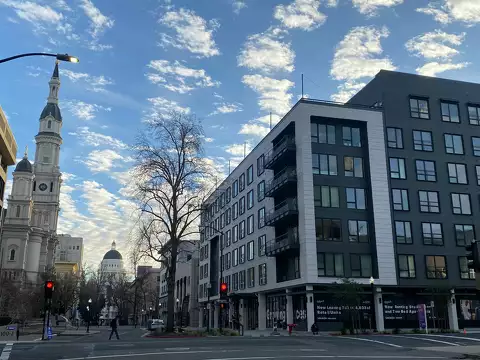stick n move
Superstar
- Joined
- Oct 14, 2009
- Messages
- 12,093
- Reaction score
- 18,872
So there is a thread about addressing the housing shortage in Boston, in the design a better Boston forum, but not a general nationwide catch all thread to post this in. I figured there might as well be a thread to post what is happening in other cities, and what is/isnt working. Heres a good one from the sf chronicle:

“Don’t look now, but Sacramento is solving the affordable housing crisis.
No, I’m not talking about state Sen. Scott Wiener and the important progresshappening at the state Capitol. I mean the city of Sacramento, where a deliberate effort to stoke a dense, infill housing boom is creating affordability before our eyes.
Rents in Sacramento are falling faster than any other large city in California even as it remains the most popular relocation destination in the country. The median rent is approximately half San Francisco’s. Right now you can find an apartment that is affordable for lower-income people, at least according to the government definition of roughly $1,000 to $1,500 for a one-bedroom, at market rates (it’s true, check Zillow). A prime location studio listed for $1,400 last year is just over $1,100 today.
True, $1,100 a month is still unaffordable for many people. But it’s progress. And unlike other cities, that decline has nothing to do with an exodus (again, the Sacramento region is the fastest-growing in California).
Instead, this affordability comes from a deliberate choice by city leaders to pursue a “more of everything” housing strategy. Yes, more subsidized, affordable housing. But also more higher-end housing with the amenities some renters are looking for — swimming pools and dog showers and so on.
To make this happen, the city also took a “more of everything” approach to reform, including upzoning in key corridors, more flexible standards, relatively low development fees, eliminating parking requirements and dozens of other incremental improvements that add up to big changes in how much it costs to build housing.
Above all, Sacramento changed its apartment building approval process from a political one — with approvals by elected officials, as in San Francisco — to what’s called a “ministerial” process, with decisions made impartially by planning staff. If a proposed building complies with the code, it’s approved automatically. This way, project decisions aren’t political or swayed by the loudest voices; they’re made fairly and in accordance with the city’s housing goals.
As a result, Sacramento is now building more housing per capita than any other region in California (to be clear, we’re still way behind national leaders like Austin, Texas, but a lot of that is California-wide limitations like anti-sprawl efforts and building costs). This boom is ongoing even as lower rents make it less profitable for developers to build….”
https://www.sfchronicle.com/opinion...to-california-affordable-housing-18663865.php
How the city of Sacramento found a solution to California’s affordable housing crisis

“Don’t look now, but Sacramento is solving the affordable housing crisis.
No, I’m not talking about state Sen. Scott Wiener and the important progresshappening at the state Capitol. I mean the city of Sacramento, where a deliberate effort to stoke a dense, infill housing boom is creating affordability before our eyes.
Rents in Sacramento are falling faster than any other large city in California even as it remains the most popular relocation destination in the country. The median rent is approximately half San Francisco’s. Right now you can find an apartment that is affordable for lower-income people, at least according to the government definition of roughly $1,000 to $1,500 for a one-bedroom, at market rates (it’s true, check Zillow). A prime location studio listed for $1,400 last year is just over $1,100 today.
True, $1,100 a month is still unaffordable for many people. But it’s progress. And unlike other cities, that decline has nothing to do with an exodus (again, the Sacramento region is the fastest-growing in California).
Instead, this affordability comes from a deliberate choice by city leaders to pursue a “more of everything” housing strategy. Yes, more subsidized, affordable housing. But also more higher-end housing with the amenities some renters are looking for — swimming pools and dog showers and so on.
To make this happen, the city also took a “more of everything” approach to reform, including upzoning in key corridors, more flexible standards, relatively low development fees, eliminating parking requirements and dozens of other incremental improvements that add up to big changes in how much it costs to build housing.
Above all, Sacramento changed its apartment building approval process from a political one — with approvals by elected officials, as in San Francisco — to what’s called a “ministerial” process, with decisions made impartially by planning staff. If a proposed building complies with the code, it’s approved automatically. This way, project decisions aren’t political or swayed by the loudest voices; they’re made fairly and in accordance with the city’s housing goals.
As a result, Sacramento is now building more housing per capita than any other region in California (to be clear, we’re still way behind national leaders like Austin, Texas, but a lot of that is California-wide limitations like anti-sprawl efforts and building costs). This boom is ongoing even as lower rents make it less profitable for developers to build….”
https://www.sfchronicle.com/opinion...to-california-affordable-housing-18663865.php
Last edited:



